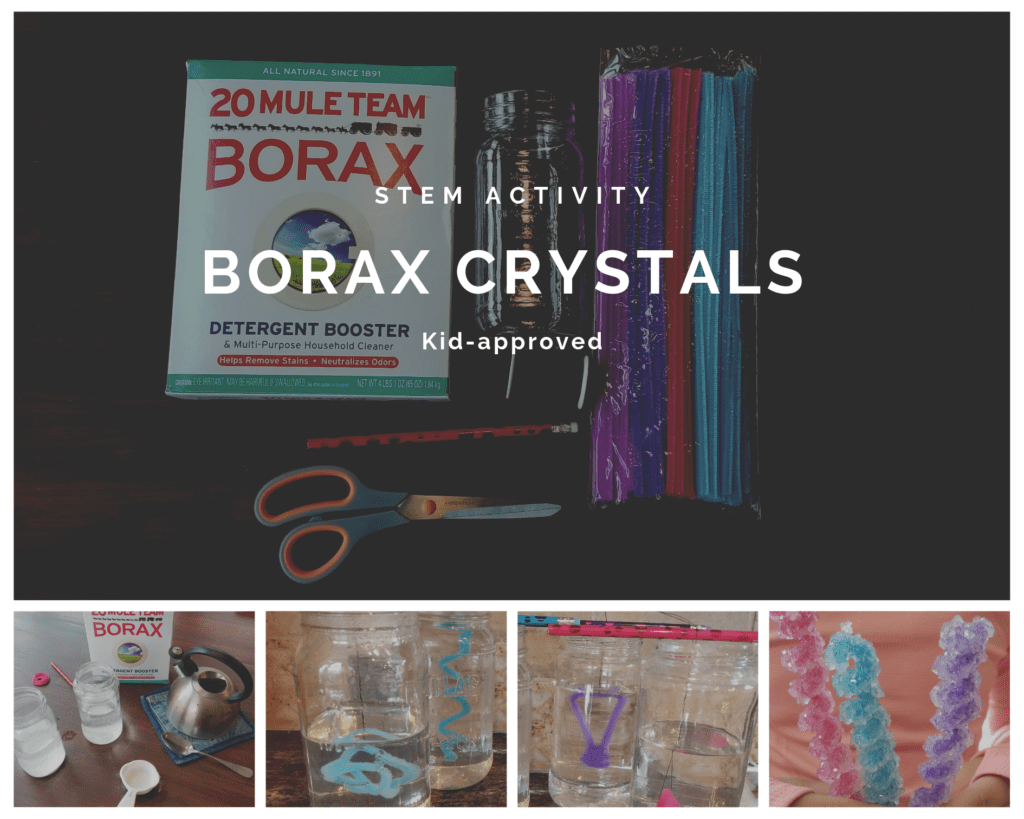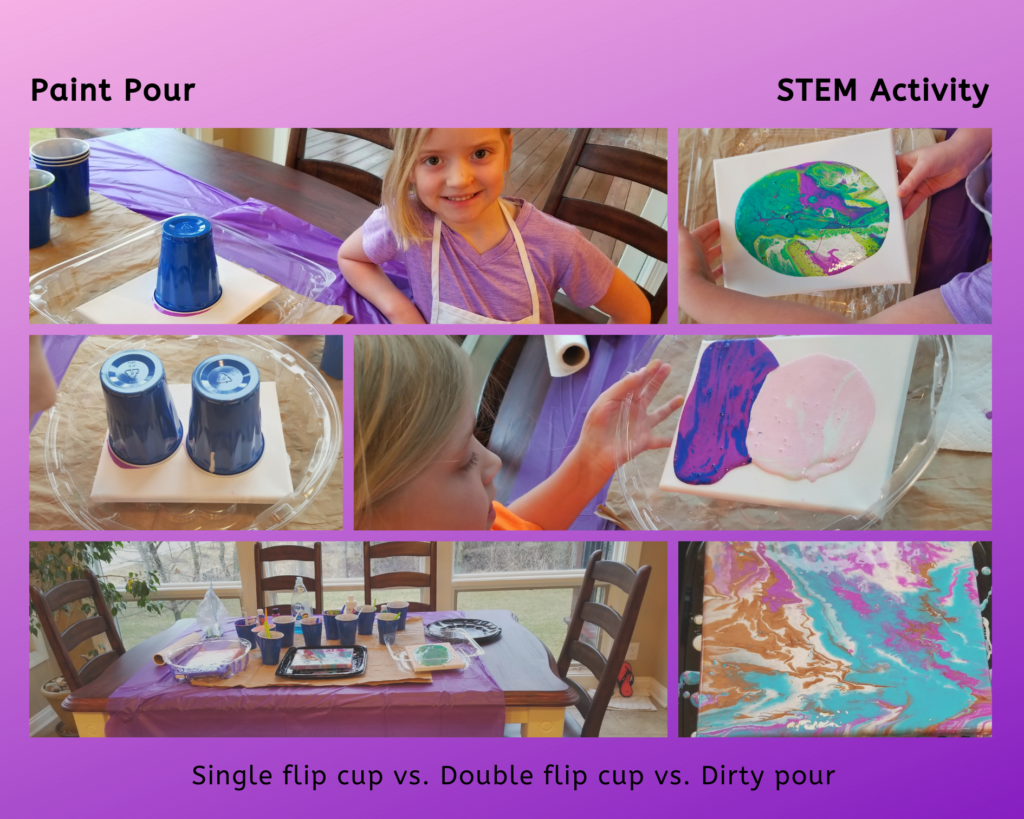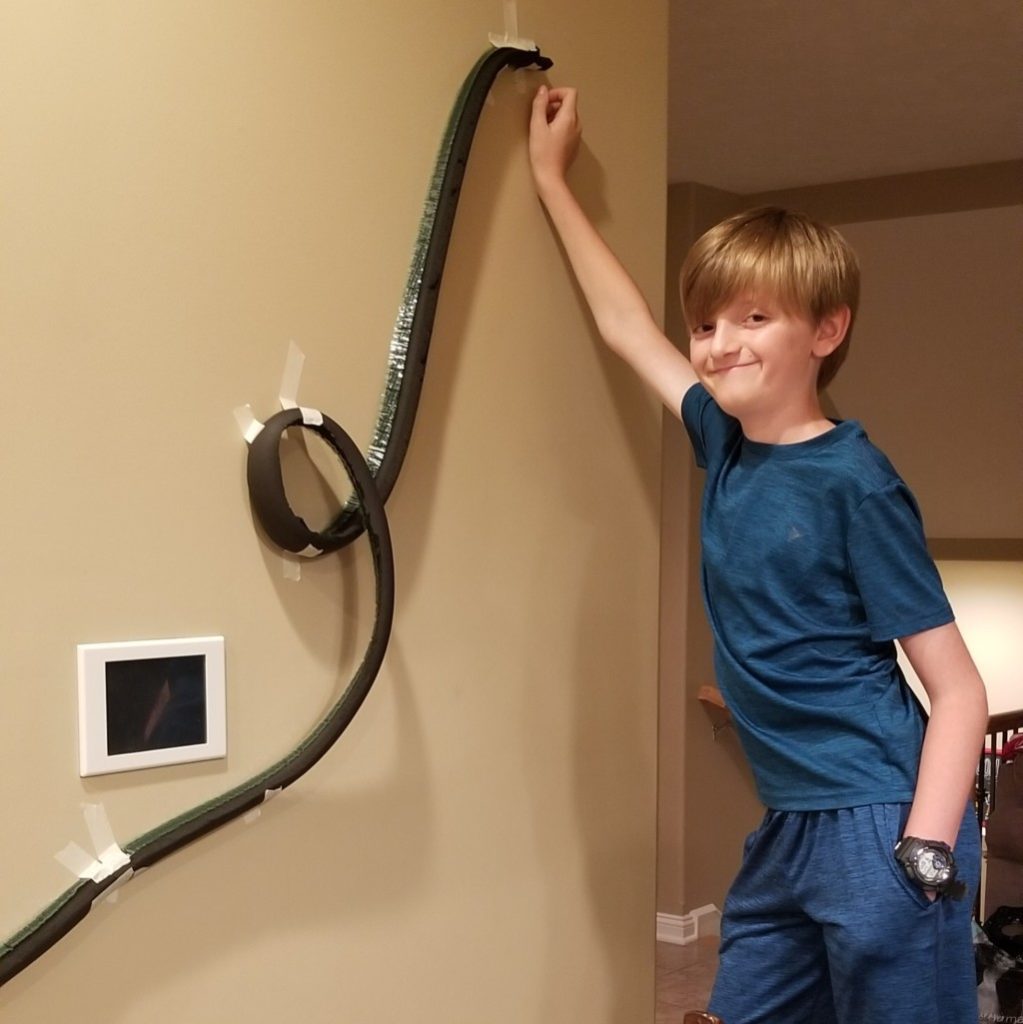We’re a few weeks into summer, and I don’t know about you, but my kiddos are looking for a little spice to the day. If yours are like mine, try one of these three STEM-based activities. We aimed for low-cost, low-mess, and highest reward.
Borax Crystals:: Exploring Science from STEM
We first tried this activity two years ago with great success. Therefore, when I was on the hunt for an activity, the half-empty box of Borax practically jumped out of the cupboard at me. All of these items we had on hand. Borax runs $5 at most box stores or the dollar store carries it and pipe cleaners for $1 each.

Need: Borax, pipe cleaners, thread, heat-safe containers, pencils, boiling water.
Heat water and pour into the heat-safe containers. (We used jars that were piling up in the garage, waiting for a trip to the glass recycling center.) Add approximately a quarter cup borax for every cup of boiling water or until you reach a saturated solution; meaning until it no longer dissolves in the water. Stir. Have your child make a creation out of pipe cleaners. It can be simple, complex, or random. Use thread to tie the pipe cleaner to a pencil and dangle from the top of the jar into the solution until completely submerged. Place in a safe area and let sit overnight.
Tips: Make sure the pipe cleaners are not touching the sides or bottom of the container. Place a towel over the container to help trap heat. After a day, remove crystals from the borax solution and air-dry. Crystals are most durable if allowed to completely dry before handling. We still have the crystals from two years ago.
Optional: For colorful results, use different colored pipe cleaners. The borax water solution can be reused of subsequent crystals. Simply reheat solution, top off with more borax, add new pipe cleaners, and watch them grow.
DIY Dirty Pour:: More Science
Personally, this concept fascinates me. We had to give it a whirl. It fails miserably in the low-mess category, but soars with the highest reward. You may enjoy this as much as your child. We used paint we had on hand. Individual canvases range from $2-$4 depending on size. To be more cost effective, we purchased a multi-pack for $10.

Need: acrylic paint, mixing medium (we used Dawn dish soap, alternatives: Floetrol or Elmers Glue-All), canvas, plastic cups, stirring sticks, drop cloth.
You will use a lot of paint. We used approximately 8oz of total paint for a 5×7 inch canvas. Therefore, cover the working surface with a drop cloth and/or tin foil or disposable baking dishes to catch excess paint as it drips off the canvas. Choose 2-3 paint colors plus a base color. You’ll need the most amount of your base color. We used white. Pour paint into individual cups. Thin paint with Dawn dish soap until runny; a thin stream of paint coming off the stirring stick. Using a new cup, add thinned paint in layers; think sand art style. The mixing medium will help prevent colors for muddling in the cup and on the canvas. For a true dirty pour, pour the layered paint cup over the canvas. Manually rotate canvas until paint is running off the sides and you have achieved a satisfactory picture. Set aside for several days to dry.
Tips: Prior to painting, use push pins pressed into each corner of the backside of the canvas to elevate it for drying purposes. Once done, run a finger along the underside of the canvas to smooth drips. Use a metallic paint as one color for added dimension.
Optional: For Flip Cup, place the canvas upside down on the top of your layered paint cup and flip. Wait 15 seconds and remove cup. Rotate canvas until satisfied. For an added challenge, try a Double Flip Cup. Make two separate layered paint cups. Place the cups on top of a flat surface (a square of cardboard will work). Place canvas onto of cups. With one hand under the square of cardboard and one on top of canvas, flip in a solid motion. Remove cups and rotate as above.
Marble Roller Coaster:: Engineering and Math from STEM
We modified this STEM activity from a college-level engineering challenge that my 11-year-old was thrilled to take on. The tubing cost $5, the mess was minimal, and the reward factor was based solely on personal achievement.

Need: 6-foot long foam tube (1/2 inch pipe insulation), masking tape, utility knife, marble.
We found our pipe insulation tubing at the local hardware store. Cut the tubing in half, thus doubling the amount of “track.” The object is to create the most rad marble roller coaster possible. The roller coaster can be taped to a floor or, in our case, the wall. Children will see first-hand, the effects of speed, gravity, and velocity. My son incorporated an upside-down loop and drop. He used trial and error to create the correct slop to achieve the right speed for the marble to make it all the way around the loop without shooting off the track. His next attempt will be around a corner and a corkscrew turn.
Tip: Use toothpicks or wooden skewers for propping or framework.


















